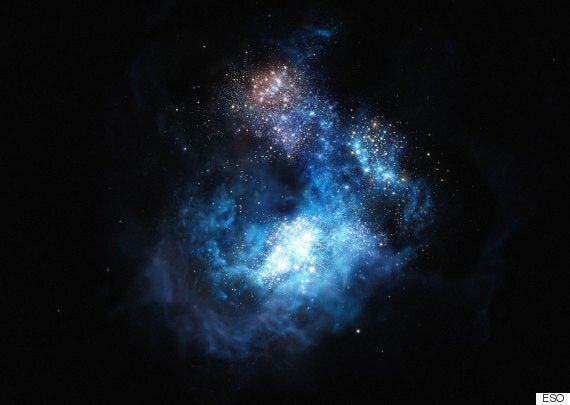The European Southern Observatory (ESO) have just come across a rather beautiful discovery.
While conducting a more expansive study of the skies with the help of Subaru Telescope and the Hubble Space Telescope, astronomers discovered CR7 - a bright young galaxy that carries with it some crucial information about ancient stars and ultimately, the universe.
Here's an artist's impression:

Aside from being exceptionally bright, its the galaxy's makeup that caught the researchers' attention.
Using two instruments, X-shooter and SINFONI, the team found strong ionised helium emission, which scientists believe was present in the first generation of stars known as Population III stars.
The team was led by David Sobral from the Institute of Astrophysics and Space Sciences, the Faculty of Sciences of the University of Lisbon in Portugal, and Leiden Observatory in the Netherlands, and he explains the significance of the ESO's discovery.
READ MORE:
- NASA Discovers The Milky Way May Already Be Colliding With Another Galaxy
- Stunning New Image Of Space Reveals New Galaxies
- The Black Hole At The Centre Of Our Galaxy Is A Trillion Sun Tornado
- Black Holes To Collide And 'Destroy Galaxy'
- Cosmic Dawn: Three Galaxies Combine Into One In Dramatic Nasa Picture Of The Birth Of The Universe
"The discovery challenged our expectations from the start ... as we didn’t expect to find such a bright galaxy.
"Then, by unveiling the nature of CR7 piece by piece, we understood that not only had we found by far the most luminous distant galaxy, but also started to realise that it had every single characteristic expected of Population III stars.
"Those stars were the ones that formed the first heavy atoms that ultimately allowed us to be here. It doesn’t really get any more exciting than this.”